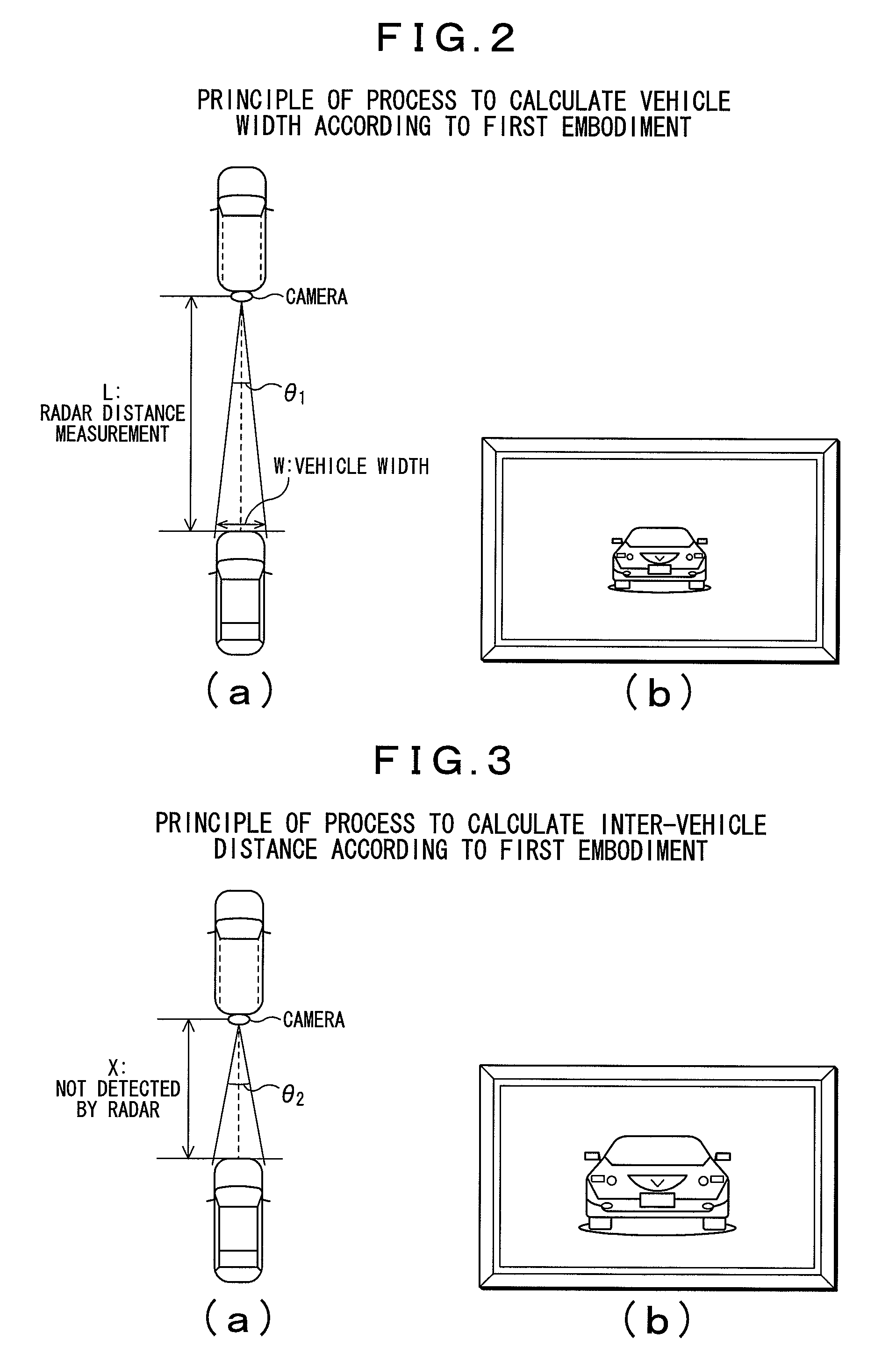Inter-vehicle distance detecting device and inter-vehicle distance detecting method
a technology of inter-vehicle distance and detection device, which is applied in the direction of measurement device, scene recognition, instruments, etc., can solve the problems of reduced received signal strength, decreased measurement distance precision, and inferior measurement distance precision, so as to achieve precise measurement distance
- Summary
- Abstract
- Description
- Claims
- Application Information
AI Technical Summary
Benefits of technology
Problems solved by technology
Method used
Image
Examples
first embodiment
[0019]A description will now be given of a first embodiment of the present invention with reference to drawings.
[0020]In FIG. 1, reference numeral 1 denotes a radar, and is installed at the rear of a vehicle. This radar 1 emits a radio wave such as a millimeter wave to the rear of the vehicle and receives the millimeter wave reflected from behind, thereby measuring the position (distance from and direction with respect to the user's own vehicle) and a relative velocity of a neighboring vehicle present behind the user's own vehicle. The distance from the user's own vehicle to the neighboring vehicle (inter-vehicle distance) is measured based on the time of travel of the millimeter wave from emission to reception after the reflection by the neighboring vehicle, and the velocity of the millimeter wave. It should be noted that in addition to a millimeter wave radar, an infrared radar and other radars may be used as the radar 1.
[0021]Reference numeral 2 denotes a camera which is also ins...
second embodiment
[0039]A description will now be given of a second embodiment with reference to the drawings. According to the second embodiment, even if a neighboring vehicle is present obliquely behind the own vehicle, the inter-vehicle distance X can be calculated. The configuration of the inter-vehicle distance detecting device according to the second embodiment is similar to that in FIG. 1.
[0040]FIGS. 5(a) and 5(b) show a principle of an inter-vehicle distance detecting process according to the second embodiment, and a principle of a process to calculate a vehicle width of a neighboring vehicle. FIG. 5(a) shows a positional relationship between the user's own vehicle and a neighboring vehicle, and FIG. 5(b) shows an image taken by a camera 2.
[0041]According to the second embodiment, the image processing unit 3, upon the radar 1 detecting a neighboring vehicle, acquires a first visual angle θ3A which ranges from a direction orthogonal to an image plane of the camera 2 (direction toward the immed...
PUM
 Login to View More
Login to View More Abstract
Description
Claims
Application Information
 Login to View More
Login to View More - R&D
- Intellectual Property
- Life Sciences
- Materials
- Tech Scout
- Unparalleled Data Quality
- Higher Quality Content
- 60% Fewer Hallucinations
Browse by: Latest US Patents, China's latest patents, Technical Efficacy Thesaurus, Application Domain, Technology Topic, Popular Technical Reports.
© 2025 PatSnap. All rights reserved.Legal|Privacy policy|Modern Slavery Act Transparency Statement|Sitemap|About US| Contact US: help@patsnap.com



